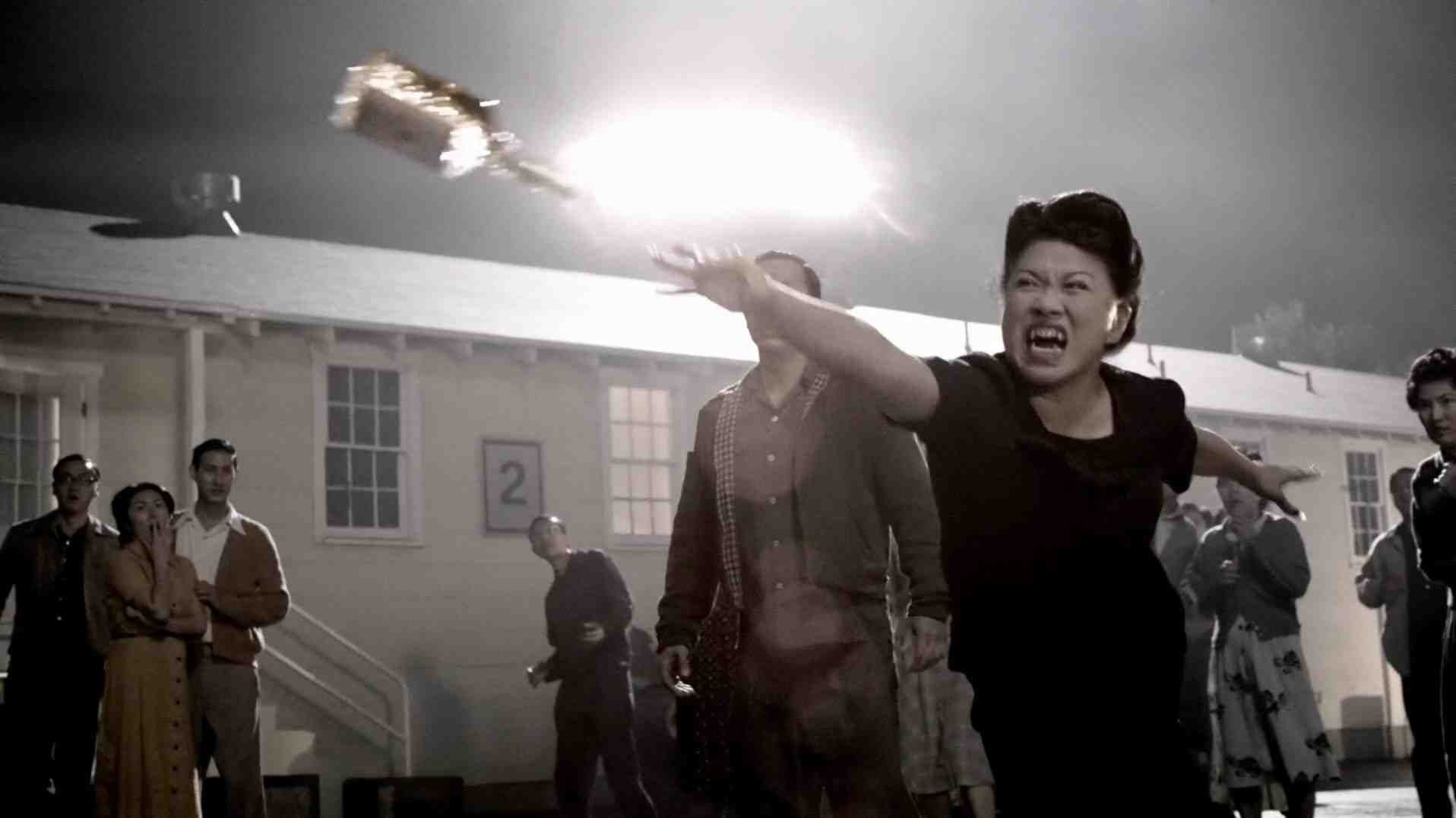August 12, 2019
On August 12, the second season of AMC’s The Terror drops, set against the backdrop of the World War II removal and incarceration of Japanese Americans. (Full disclosure: Densho aided background researchers for the show.) While The Terror is arguably the highest profile TV depiction of this experience — at least in the U.S. — there have been a surprising number of series episodes and made-for-TV movies that have explored the topic, to various degrees of success.
In anticipation for The Terror premiere, we’ve compiled a list of some of the more memorable episodes — in chronological order, rated for entertainment value and historical accuracy on a scale of 1 to 5.
1. If Tomorrow Comes
Directed by George McCowan (1971, CBS). Aaron Spelling-produced made-for-television movie about a romance between a Nisei man (Frank Liu) and a white woman (Patty Duke) in a small California town that is disrupted by the Japanese attack on Pearl Harbor. Though the story takes place before the mass removal of Japanese Americans, the characters are shown preparing for their expulsion, and the movie includes a scene that depicts one of the enemy alien internment camps.
Entertainment value: 2
Just really, really bad! Presents an exotic version of “Japanese” culture that would be unrecognizable to actual Japanese Americans.
Historical accuracy: 2
2. Farewell to Manzanar
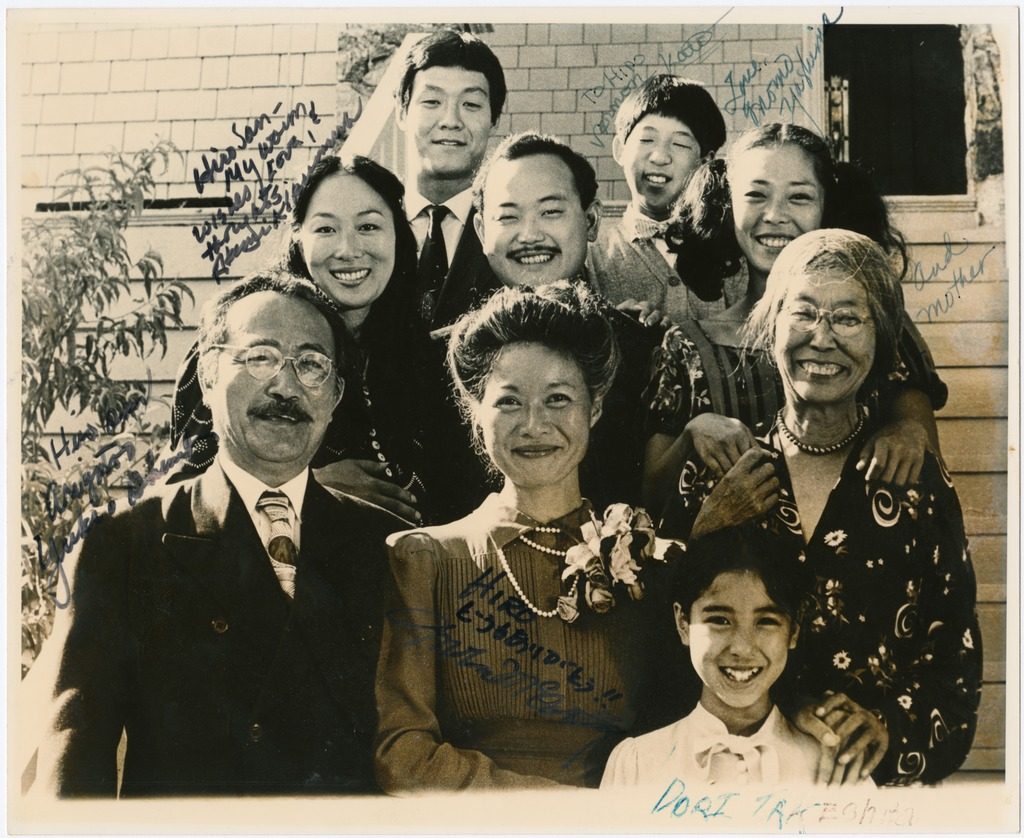
Directed by John Korty (1976, NBC). Landmark made-for-television movie that was the first dramatic film primarily set in the concentration camps. Based on the acclaimed memoir by Jeanne Wakatsuki Houston and James D. Houston, who also wrote the screenplay, the story is based on young Jeanne’s memories of her childhood years at Manzanar.
Entertainment value: 4
Though criticized by many Japanese Americans at the time for soft pedaling white racism and downplaying resistance, I think it holds up well, and it remains just about the only program on this list whose main characters are all Japanese American and who are played by Asian American actors.
Historical accuracy: 4
3. Wonder Woman, Season 1, Episode 11, “Judgement from Outer Space: Part 2.”
First aired on January 17, 1977. Directed by Alan Crosland. An observer from the Council of Planets is sent down to assess the state of humankind, investigating both Allies and Nazis. In making the case for the former, Wonder Woman tells him that unlike the Nazis, “Americans don’t make arbitrary arrests or use concentration camps.” He replies, “I think you better explain that to the Americans of Japanese descent.”
Entertainment value: 3
Historical accuracy: n/a [No mention of the incarceration except for that one line.]
4. Wonder Woman, Season 2, Episode 3, “The Man Who Could Move the World.”
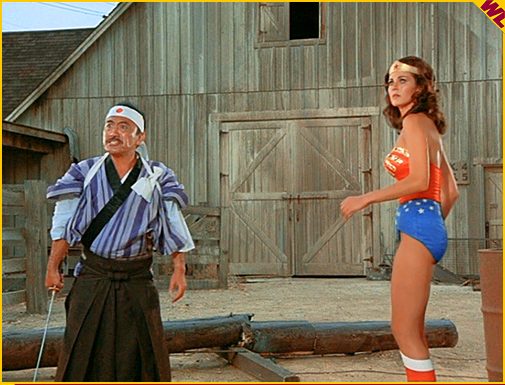
First aired on September 30, 1977. Directed by Bob Kelljan. Ishida (Yuki Shimoda), a Japanese American who has been working with a scientist to develop his power to move objects with his mind, blames Wonder Woman for killing his brother as they escaped from the “Los Alamos Relocation Center” as children during World War II. Seeking revenge with his newfound powers, he lures her back to the ruins of the camp for a showdown.
Entertainment value: 3
Historical accuracy: 1
In a flashback scene, Ishida and his brother escape from their “Relocation Center” as bombs — dropped by whom exactly? — fall around them. Was there an invasion of New Mexico I never heard about? Also conflates “Japanese” and “Japanese American.”
5. Lou Grant, Season 5, Episode 15, “Recovery.”
First aired on March 8, 1982. Directed by Roger Young. In researching a story on those who profited from the forced removal of Japanese Americans in 1942, Rossi finds that the late husband of Mrs. Pynchon, the newspaper’s publisher, was one of them. Includes meaty roles for Pat Morita and Clyde Kusatsu.
Entertainment value: 5
A dramatic and moving storyline aired in the midst of the Redress movement. By far the best of this lot.
Historical accuracy: 5
6. Magnum P.I., Season 3, Episode 17, “Forty Years from Sand Island.”
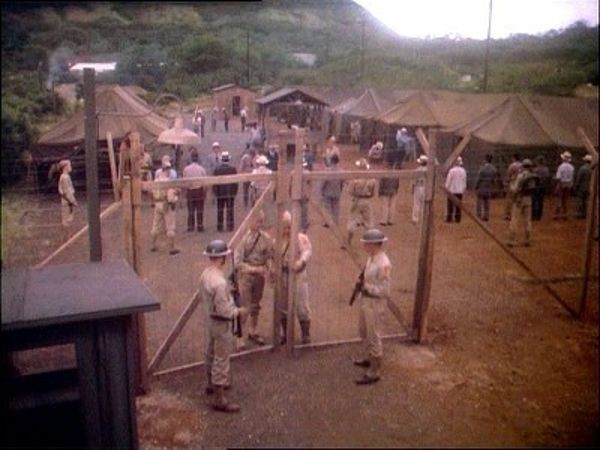
First aired on February 24, 1983. Directed by Mike Vejar. A murder of an inmate at Sand Island by two guards in January 1942 comes to the surface when Higgins begins doing research on Japanese Americans in Hawai’i during World War II for new book by Masters. Though none of the former internees want to talk about the war years, Magnum suspects that one of the men — Dr. Enoka (James Shigeta), who is now running for senate — tried to kill Higgins in order to keep something from the past a secret.
Entertainment value: 2
A comically convoluted plot comes to little end.
Historical accuracy: 3
The flashback depictions of Sand Island are reasonably accurate, or at least better than the later depictions in Hawaii Five-0.
7. Cold Case, Season 5, Episode 11, “Family 8108.”
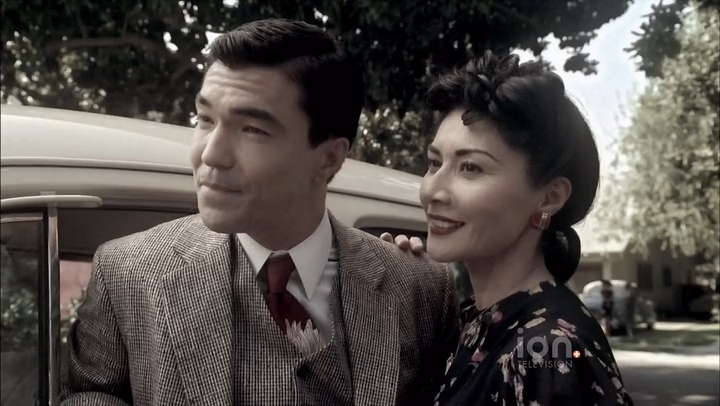
First aired on December 9, 2007. Directed by Jeannot Szwarc. The team investigates the killing of Ray Takahashi, a Nisei who had resettled with his family from Manzanar, in 1945. Each of the suspects recalls the war years through flashback scenes set at Manzanar or in resettlement era Philadelphia.
Entertainment value: 3
Historical accuracy: 2
Manzanar scenes include armed guards patrolling the inmate area; characters in the present day are played by actors thirty or forty years too young.
8. 7th Heaven, Season 4, Episode 9, “Dirty Laundry.”
First aired on November 22, 1999. A Nisei parishioner, Sachiko Ishida (Takayo Fischer) donates her $20,000 redress check to the church, in part to try to escape from a past she has never come to terms with. Parallels are drawn between the shunning of Japanese Americans during the war and school situations faced by several of the Camden children. Cast also includes Mako.
Entertainment value: 3
A believable storyline is marred by too much exposition by the Nisei characters.
Historical accuracy: 4
9. Hawaii Five-0, Season 4, Episode 10, “Ho’onani Mauakane.“
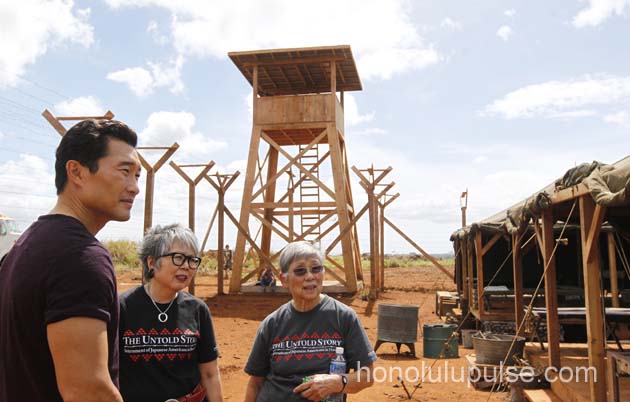
First aired on December 13, 2013. Directed by Larry Teng. The attempted shooting of an elderly veteran by a local Japanese Americans reveals the existence of a seventy year old unsolved murder that took place in the Honouliuli internment camp. Flashback scenes portray the internment of Japanese Americans in Hawai’i and life at Honouliuli in a manner that conflates that story with the roundup and incarceration of Japanese Americans on the West Coast. (See my earlier review of this and Teen Wolf for more.)
Entertainment value: 4
Historical accuracy: 2
10. Teen Wolf, Season 3, Episode 21, “The Fox and the Wolf.”
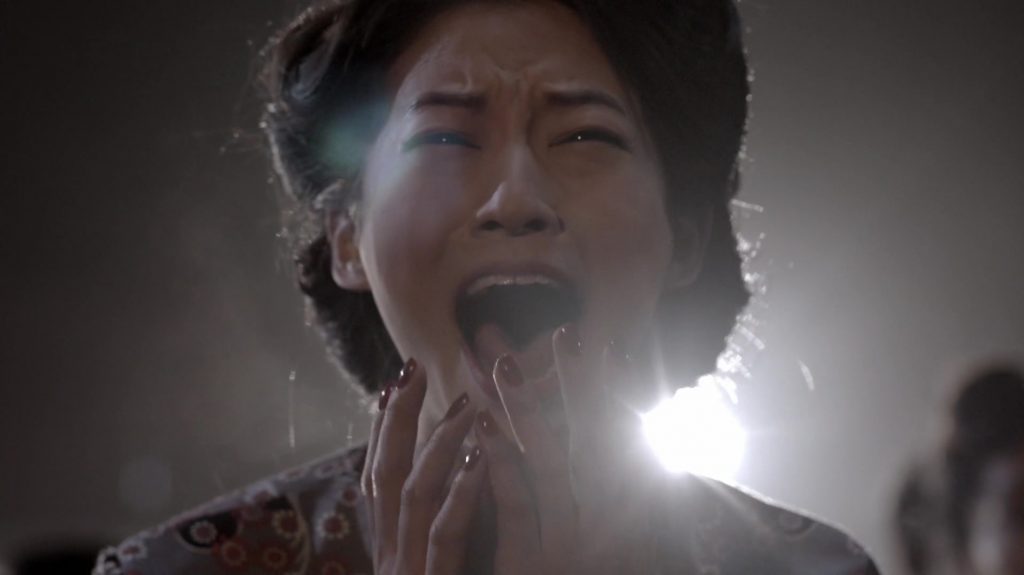
First aired on March 3, 2014. Directed by Tim Andrew. The apparent possession of a high school student by a Japanese fox spirit leads to a flashback to a secret World War II concentration camp for Japanese Americans named “Oak Creek.” Scenes set at the camp reveal that inmates there were slaughtered by guards after a riot.
Entertainment value: 4
Historical accuracy: -5 [Yikes!]
—
By Brian Niiya, Densho Content Director
Descriptions of the shows were taken from the Densho Encyclopedia article, “Dramatic films/videos on incarceration.”
[Header photo: Screen still from Teen Wolf‘s “The Fox and the Wolf” shows actress Lily Mariye, as the werewolf Satomi, hurling a Molotov cocktail at a camp guard during a riot scene.]
